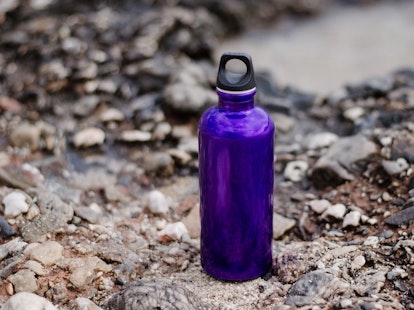SG 106.22
Ukraine has issued three pieces of draft legislation to regulate several categories of food contact materials and articles. Their safety requirements are aligned with those of the European Union.
In August 2022, Ukraine’s Ministry of Health issued three draft Orders to regulate food contact ceramics and food contact plastics, as well as N-nitrosamines and N-nitrosatable substances in elastomer and rubber teats and pacifiers. These proposals aim to align the safety requirements for food contact materials and articles with those in the European Union (EU).
Highlights of the three draft Orders are summarized in Table 1.
| Draft Order of the Ministry of Health of Ukraine | Highlight | Date of entry into force |
|---|---|---|
| On prohibition of the use of 2,4,4’-trichloro-2-hydroxydiphenyl ether in the manufacture of plastic materials and articles intended for contact with food [1]* | Prohibits 2,4,4’-trichloro-2-hydroxydiphenyl ether in the manufacture of food contact plastics | Three months after publication in the official journal |
| On approval of the requirements for ceramic products intended for contact with food [2, 3]** | Requirements for migration of lead and cadmium (see Table 2 below) | Six months after publication in the official journal |
| On approval of the criteria for the release of N-nitrosamines and N-nitrosatable substances from elastomer and rubber teats and soothers [4, 5]*** | ≤ 0.01 mg/kg N-nitrosamines ≤ 0.1 mg/kg N-nitrosatable substances | Six months after publication in the official journal (the restriction of N-nitrosamines and N-nitrosatable substances applies from January 1, 2024) |
*Aligns with Commission Decision 2010/169/EU of March 19, 2010 ‘Non-inclusion of 2,4,4’-trichloro-2-hydroxydiphenyl ether in the Union list for the manufacture of food contact plastics’. Food contact plastics manufactured with 2,4,4’-trichloro-2’-hydroxydiphenyl ether and placed on the market on or before January 1, 2023, may continue to be marketed until January 1, 2024
**Aligns with Directive 84/500/EEC ‘Food contact ceramics’ (consolidated version to May 2005). Food contact ceramics manufactured before the date of entry into force may remain on the market until stocks are exhausted
***Aligns with Directive 93/11/EEC ‘Release of N-nitrosamines and N-nitrosatable substances from elastomer or rubber teats and soothers’
Table 1
Annex 1 to Draft Order of the Ministry of Health of Ukraine ‘On approval of requirements for ceramic products intended for contact with food’ (per draft Order text), August 22, 2022
| Category of Food Contact Ceramic | ||
|---|---|---|
| Lead | Cadmium | |
| PASS | ≤ 0.8 mg/dm² | ≤ 0.07 mg/dm² |
| Category 2: All other articles which can be filled | ≤ 4.0 mg/L | ≤ 0.3 mg/L |
| Category 3: Cooking ware; packaging and storage vessels having a capacity of more than three liters | ≤ 1.5 mg/L | ≤ 0.1 mg/L |
Table 2
SGS technical experts have extensive knowledge and testing experience in materials and articles in contact with food. They work to ensure that your products meet the appropriate regulations for food contact materials, paving the way for compliance. From overall migration tests to expert advice on emerging regulations, compliance issues and documentation review, SGS is the partner to trust. In the end, it’s only trusted because it’s tested. Discover more on our website.
For enquiries, please contact:
Dr. Hingwo Tsang
Global Information and Innovation Manager
t: (+852) 2774 7420
© SGS Société Générale de surveillance SA- 2022 - All rights reserved - SGS is a registered trademark of SGS Société Générale de surveillance SA. This is a publication of SGS, except for 3rd parties’ contents submitted or licensed for use by SGS. SGS neither endorses nor disapproves said 3rd parties contents. This publication is intended to provide technical information and shall not be considered an exhaustive treatment of any subject treated. It is strictly educational and does not replace any legal requirements or applicable regulations. It is not intended to constitute consulting or professional advice. The information contained herein is provided “as is” and SGS does not warrant that it will be error-free or will meet any particular criteria of performance or quality. Do not quote or refer any information herein without SGS’s prior written consent.



